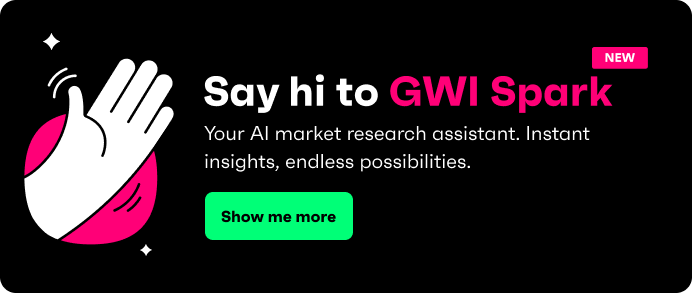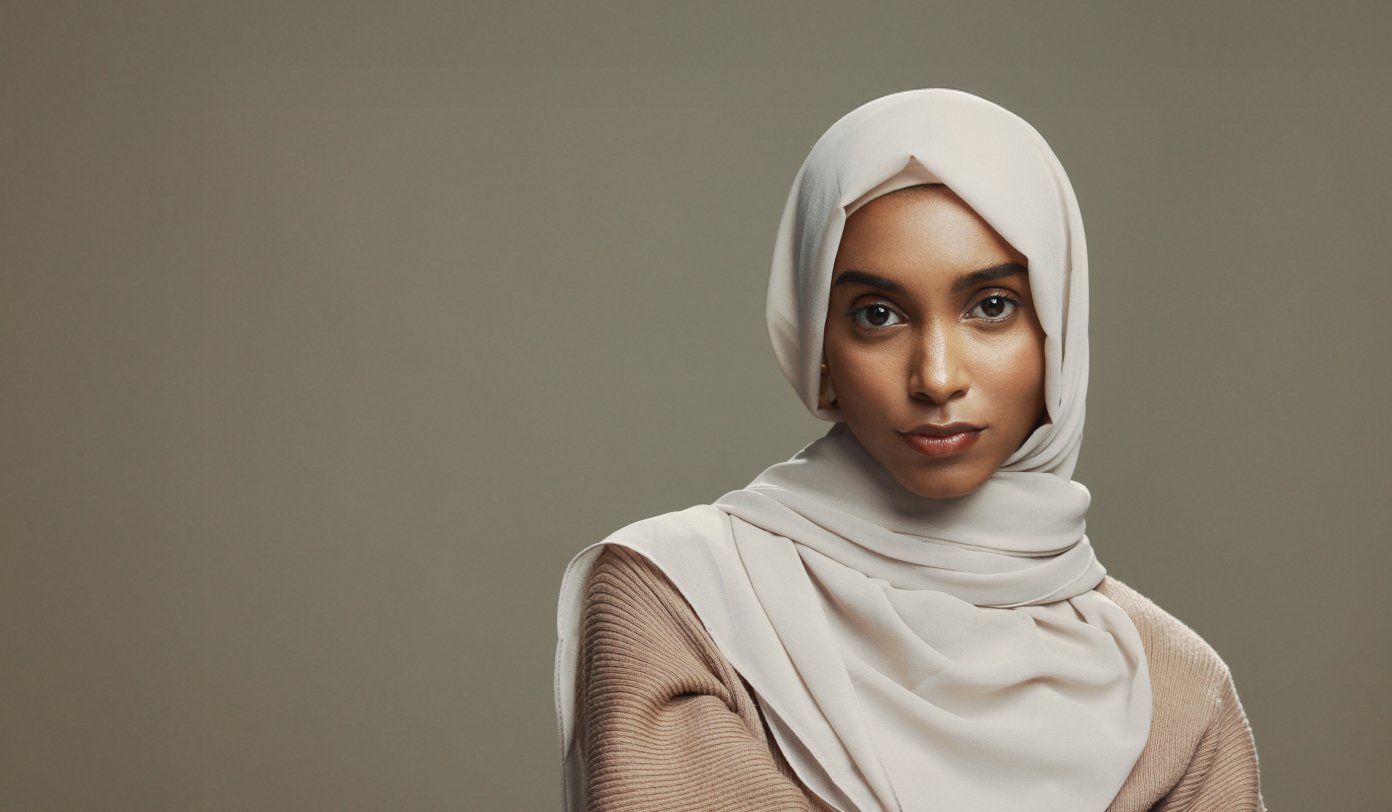
The rise of women’s sports isn’t just a cultural win. It’s a brand-building opportunity hiding in plain sight. With viewership climbing, audiences shifting younger, and fans showing high engagement across digital channels, this is a space where early action delivers results.
Why women’s sports are a fast-growing opportunity for brands
Women’s sports are picking up serious momentum, moving from the sidelines to center stage with some serious force. The signs are everywhere: packed stadiums, skyrocketing viewership, and a cultural buzz brands can’t afford to ignore.
Just look at the numbers. In the UK, interest in the UEFA Women’s Champions League has more than doubled since 2020 - up a massive 132%. The FIFA Women’s World Cup isn’t far behind, with a 62% surge in the same period. Meanwhile, in the US, the WNBA is having a moment. Interest has jumped 90% since late 2021, and this year’s WNBA Draft pulled in 2.4 million viewers - a 328% leap from the year before.
So, what does all this mean for brands?
It means the time to act is now. This isn’t just a visibility play; it’s about catching a cultural wave while it’s still building. The brands that show up early and invest authentically won’t just win exposure - they’ll earn loyalty and credibility in a space that’s only going up.
What makes women’s sports fans so valuable to brands?
The real story behind the rise of women’s sports isn’t just the numbers - it’s the people driving the growth.
They’re young, switched on, and value-led
Women’s sports fans are largely a younger, values-driven crowd.
16-24 year olds are 18% more likely than average to follow women’s sports, and the largest slice of the audience is aged 25-34.
Only 8.6% are 65 or older.
This generation of fans doesn’t just show up - they stand for something. 73% believe in equal rights for all people, and they’re drawn to brands that take a stand and mean it. Purpose-led messaging matters for this crowd.
They live online and lead the trends
Women’s sports fans don’t just use social media - they shape what happens on it.
- Instagram is the go-to: Over half of these fans check it more than once a day. For Gen Z, that jumps to 65%.
- TikTok is huge too: 55% of Gen Z fans use it daily.
- Snapchat stands out: Gen Z women’s sports fans are 86% more likely than millennials to use it multiple times a day.
- Pinterest still plays a role: 17% of Gen Z fans are on it every day.
When it comes to product discovery, digital is firmly in charge:
- Gen Z fans are much more likely to find new products through vlogs (60% more than millennials) and influencer content (80% more than boomers).
- Millennials rely more on social comments and peer reviews, but both millennials and Gen Z say social media ads are a key way they discover new things.
They’re not just engaged - they’re influential
Women’s sports fans don’t just passively scroll or spectate - they take action and spark conversations. In fact, they’re 53% more likely than average to recommend products to others. That means when they like something, they share it - turning your brand message into word-of-mouth momentum.
And it doesn’t stop at influence. This audience lives at the intersection of sport, style, and culture - a combination that makes them especially valuable for lifestyle, fashion, and beauty brands.
- 63% consider themselves fashion-conscious
- 53% are interested in beauty and self-care
- They’re 120% more likely to follow celebrity news
They’re plugged into what’s trending - and they often help set the trend. Whether it’s the sneakers they wear, the skincare they swear by, or the creators they follow, this group drives visibility and credibility across categories.
Why all this matters for brands: This is a modern, multigenerational audience with digital instincts and cultural clout. They’re vocal, values-led, and deeply embedded in the spaces where brand discovery and advocacy happen. For brands, this is a prime opportunity to connect with the audience defining what comes next.
The ROI case: What brands are seeing from women’s sports sponsorships
Sponsorship in women’s sports isn’t just a gamble - it’s delivering measurable, bottom-line impact across sectors.
Consumers are already showing the value of smart partnerships: 32% say a brand that sponsors their favorite team or league leaves a more positive impression. Among women’s sports fans, that brand lift goes even further. They’re 53% more likely to recommend products to others, meaning positive sentiment can quickly translate into real-world action.
And the success stories are piling up:
- Rolex has leaned into women’s golf, sponsoring multiple LPGA events. The result? LPGA fans are 41% more likely than the average American to say Rolex would be their first choice when buying an accessory.
- Whoop is another LPGA sponsor and it’s looking like their investment is scoring big - as almost a fifth of its fans own a smart wristband, compared to just 12% of all Americans.
- Ralph Lauren has long invested in tennis partnerships like Wimbledon - and it’s paying off. Wimbledon fans are 82% more likely to have bought Ralph Lauren in the last year compared to the average sports fan.
Beyond individual brand wins, there’s broader momentum too. Research from TV ad outcomes company Edo shows that ads aired during women’s sports events are becoming increasingly effective, signaling that consumer engagement is only getting stronger.
How GWI data helps brands navigate the women’s sports landscape
Winning here requires more than visibility. It takes precision.
GWI gives brands the tools to segment audiences by region, mindset, and media behavior. In India, sports fans are 50% more likely to watch on mobile. In Spain, Brazil, and the UK, fans are more likely to watch in bars. That kind of context shapes how and where sponsorship should land.
Beyond location, we help brands dig into how fans behave - what platforms they trust, how they share, and which content prompts action. With GWI, brands can activate smarter, test faster, and refine in real time.
Strategic takeaways for brands entering women’s sports
Quick-hit recommendations:
- Get in early. There’s still space to lead, but not for long.
- Invest with purpose. Authenticity and alignment matter more than scale.
- Let data guide you. Know who you’re targeting and what moves them.
Women’s sports fans aren’t just digitally native - they’re deliberate. 52% use Instagram more than once a day, and many significantly over-index on platforms like Threads and Pinterest. But they’re also thoughtful about how they engage. This audience is 40% more likely to worry about how much time they spend on smartphones, and that self-awareness is worth noting. It signals a deeper consciousness about what they consume and who they let into their digital space.
FAQs: What do brands need to know about women’s sports sponsorship?
Why are brands investing in women’s sports now?
Fan growth, cultural relevance, and digital engagement are all accelerating. This is one of the most dynamic spaces in sport.
How can brands measure ROI in women’s sports?
Through engagement metrics, brand lift, GWI attitudinal data, and real-time conversion signals. We help track what matters.
Are women’s sports fans really that different?
Yes. They’re younger, more digitally fluent, and more purpose-driven than many traditional sports audiences.
What’s the first step for a brand entering this space?
Use GWI to identify which fan segments align with your audience, then build creative and partnerships that match their mindset.





.webp?width=495&height=317&name=pink_thumb_graphs%20(1).webp)
.webp?width=495&height=317&name=pink_thumb_letter%20(2).webp)